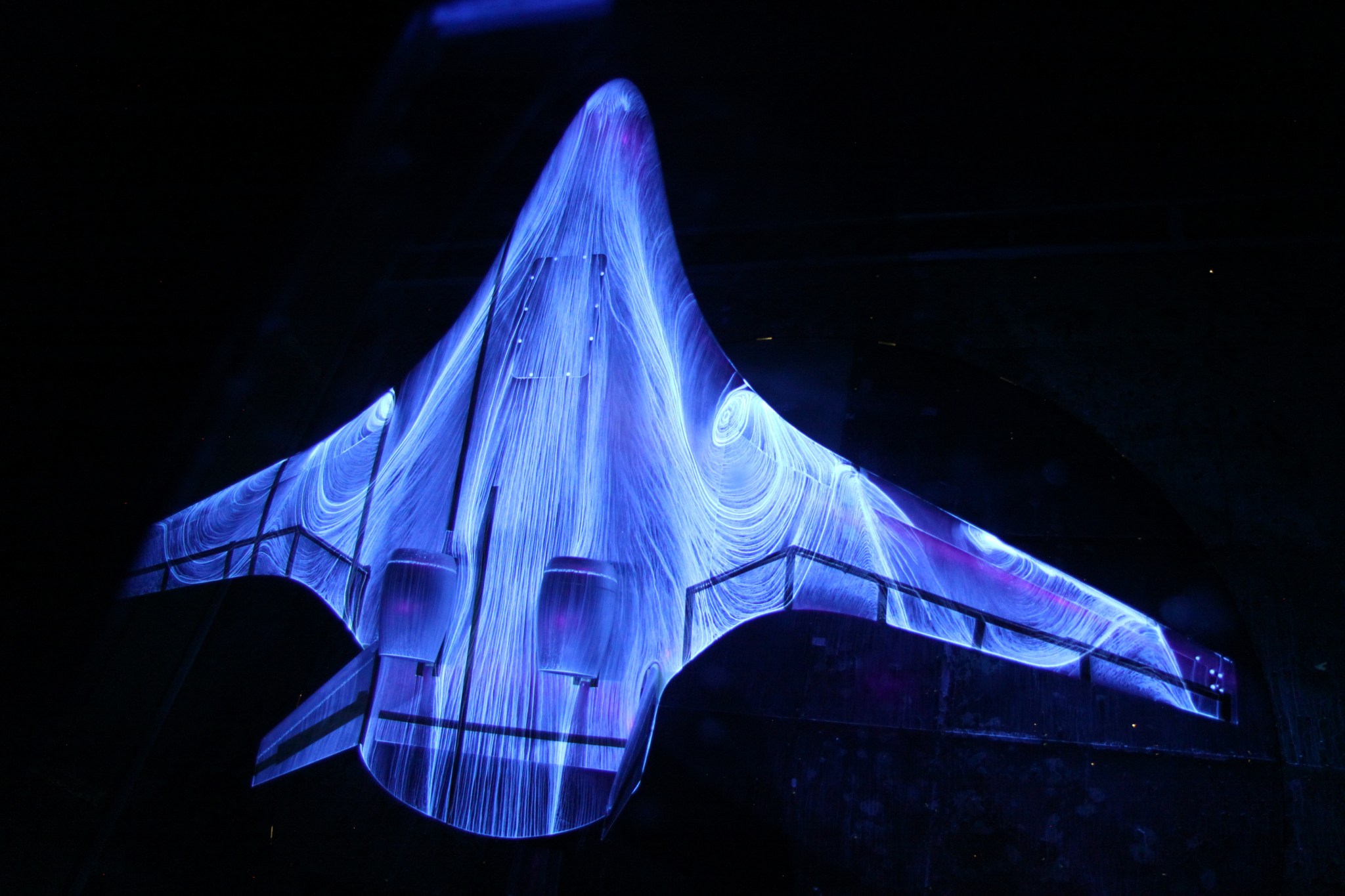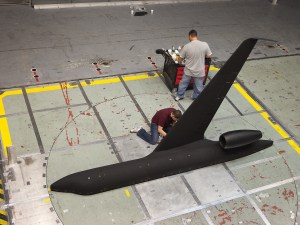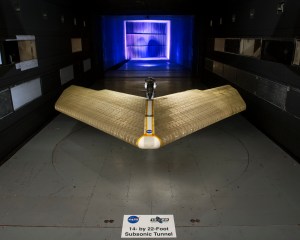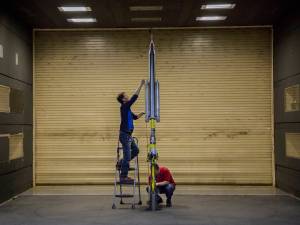
9- by 15-Foot Low-Speed Wind Tunnel
The 9- by 15-Foot Low-Speed Wind Tunnel at GRC has nationally recognized capabilities to evaluate the aerodynamic performance and acoustic characteristics of fans, nozzles, inlets, and propellers. The tunnel can simulate takeoff, approach, and landing in a continuous subsonic flow wind tunnel environment including the investigation of hot gas re-ingestion of short takeoff and vertical landing (STOVL) concepts. The acoustically treated test section and microphones linked to a dynamic data system allow state-of-the-art acoustic measurements to frequencies as low as 250 Hz for research in reducing aircraft noise. Recent programs supported in this facility include the High-Speed Civil Transport, the Advanced Tactical Fighter, as well as the General Electric Aircraft Engines (GEAE) next-generation (GEnx) engine.
14- by 22-Foot Subsonic Tunnel
The 14- by 22-Foot Subsonic Tunnel at LaRC typically performs conventional performance testing for fixed-wing and rotorcraft configurations over a wide range of takeoff, landing, cruise, and high angle-of-attack conditions. However, this versatile facility can easily be reconfigured for acoustic, tethered free flight, rotorcraft, and forced oscillation (dynamic stability). The 14×22 also has the flexibility to test in either closed (walls, ceiling, and floor) or open (floor only) test section configurations. The maximum speed in the closed test section is 235 mph and 200 mph in the open test section. In 2001, the main drive was replaced with a 12,000 hp solid state converter with synchronous motor. Recent upgrades to the facility includes new acoustic microphone traverse systems on both the ceiling and floor, as well as hot jet engine simulator using gaseous propane. Major clients include the Department of Defense and aircraft manufacturers such as Boeing, Lockheed Martin, and Northrop Grumman.
Icing Research Tunnel
While there are numerous wind tunnels worldwide, the Icing Research Tunnel (IRT) is a rare and unusual facility located at GRC. Currently, the IRT is the U.S.’s largest refrigerated wind tunnel, devoted to investigating the myriad issues of aircraft icing. The tunnel simulates natural icing conditions to test the effects of in-flight icing on various aircraft components and scale models. The goal of the IRT is to replicate the Federal Aviation Administration (FAA) aircraft icing certification standards contained in the Federal Aviation Regulation (FAR) Part 25, appendix C. These tests reflect NASA’s goals of assuring operational safety and advancement of critical aeronautics technologies to provide safer air transportation.
20-Foot Vertical Spin Tunnel
Maneuvering aircraft may encounter a dangerous condition known as spin, caused by a sudden loss of lift over wings or control surfaces. NASA’s 20-Foot Vertical Spin Tunnel (VST) is the only operational tunnel of its kind in the Western Hemisphere that conducts free-spin research using dynamically scaled, free-flying models. The VST is a closedthroat, annular-return facility that operates at nominal atmospheric conditions, with velocities that can be rapidly adjustable up to 85 ft per sec.
































